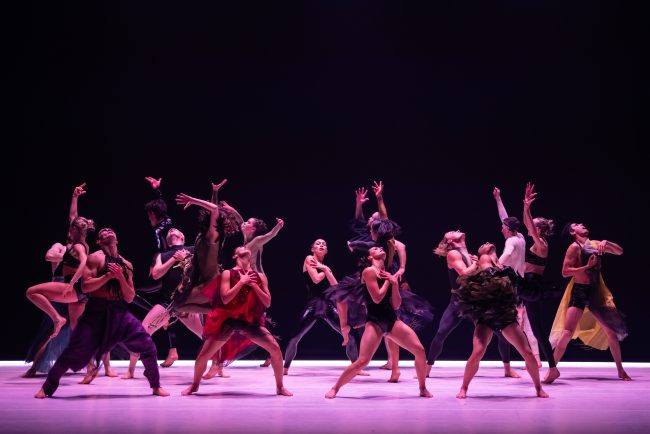
Wednesday 18 September, 2024
Review by Paul Neeson (Arts Wednesday)
The Sydney Dance Company’s double bill, Twofold cements their reputation under the Artistic Direction of Rafael Bonachela as one of the premier contemporary dance companies in Australia.
The opening work, Impermanence was choreographed by Bonachela and first conceived with composer Bryce Dessner in 2019 as a response to both the fire at Notre Dame in Paris and the severe summer of bushfires in Australia. They considered “how easily things fall apart, even structures we imagine to be eternal, but also the fragility and impermanence of human life, the planet and human relationships.” It has toured extensively in Australia, Europe and America and returns now to Sydney as part of this exciting double bill.
As the curtain rises, the first image we see is the dancers walking slowly and aimlessly across the stage in lineal formations, the mood is sombre, some walking backwards and in opposite directions. We get a sense of a lack of direction, but this is only transient as gestures and dance movements begin to infuse the choreography. Some of these steps looked at first like parkour, but that also evolves quickly into more complex and stylised movements. The movements are mainly individualistic presenting a complex panorama of steps that occasionally unify into precise ensemble work giving a greater sense of purpose and meaning to the dance. However these unison moments were only brief, reiterating the underlying feeling of impermanence.
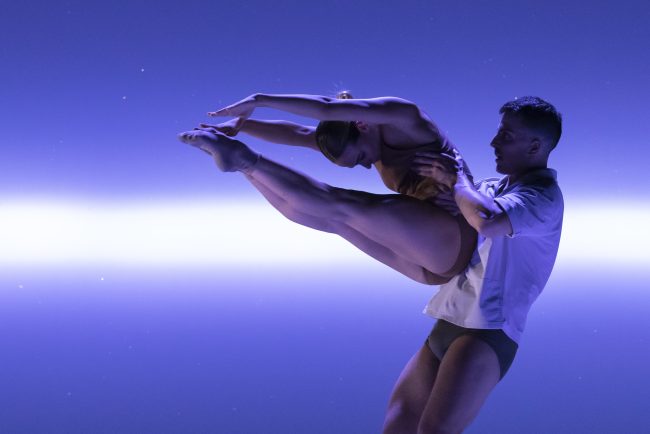
There was a constant flux in the number of dancers on stage, from an exquisite pas de deux that gave the appearance of being danced on ice or oil as the couple slid smoothly across the stage, to angst ridden solos holding our attention before morphing once more into larger ensemble work. Aleisa Jelbart’s costumes were understated in pastel shades of blue, brown, grey and olive green, the hues you would expect to see in the Australian bush.
Much of the performance was done in silhouette, so each dancer was bleached of individuality. The lighting design (Damien Cooper) was subdued with mostly blues and mauves for the first half, turning to deep oranges as the fires become more intense. Ultimately, the rain begins to fall (a clever effect over a deep blue background) and eventually a new dawn begins to emerge. The painstakingly beautiful dissolve from night to dawn was matched by the shoots of new growth in the choreography that evolved into a strong, confident solo tree at the conclusion.
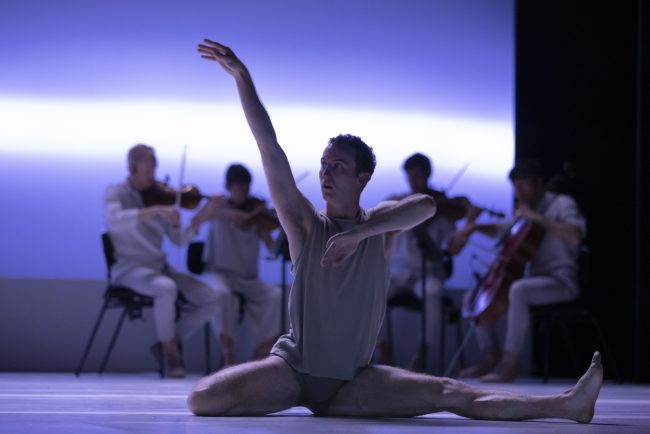
Apart from the incredibly talented and expressive dancers, the unsung heroes of the performance were the Australian String Quartet, positioned at the back corner of the stage, who courageously performed Bryce Dessner’s high energy score continuously throughout the entire 57 minutes of the work. Hints of electronic embellishment of the strings could be detected on occasions in the form of booming bass notes and subtle percussion.
The interval gave us time to digest this rewarding work before we launched into the world premiere of Melanie Lane’s Love Lock. The contrast to the opening work was immediately apparent, and time would tell what a great pairing they were.
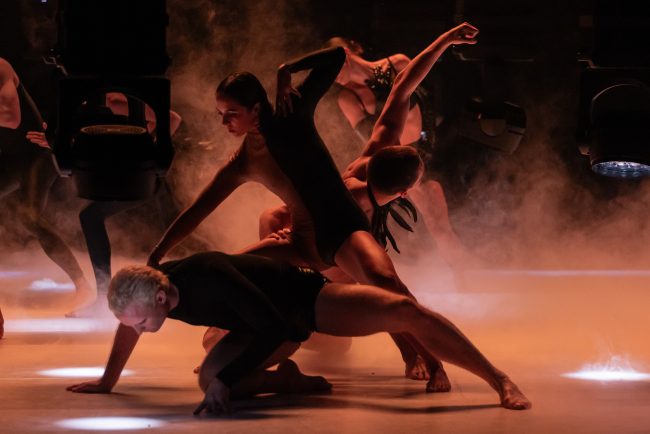
One of the most atmospheric openings to a theatrical work I’ve seen, heralded something magical was about to unfold. The dawn bird chorus and the mist rising from the lake (?) with dark amorphous figures in the dim background evoked a sense of Tchaikovsky’s Swan Lake, but when the heavy techno soundtrack (Clark) asserted itself, and the combination of shiny tight PVC costumes with hints of feathers and ample swathes of bare flesh (Akira Isogawa) the image shifted more to Matthew Bourne’s Swan Lake, especially with the repeated choreographic device of the raised single swan-like right arm. But all these impressions soon evaporated into a dark subversive night club atmosphere. The gestures were often sexualised and aggressive at first but softened over time as more and more colour, gauze cloaks and feathers enhanced the costumes. Much of the work was danced demi-pointe, giving a rather odd effect (not unlike the Thunderbirds puppet animation), and an extended section with one foot demi-pointe and the other flat.
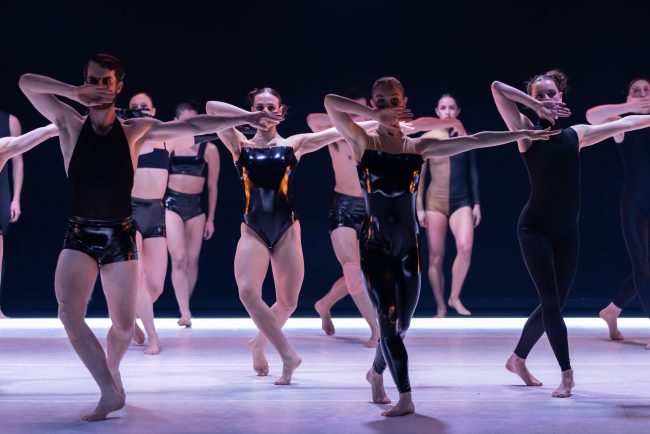
There were some other unique elements in the production that while unexpected, were rewarding. The lighting rig itself (Damien Cooper) was choreographed with large lights on descending poles moving in sync with the dancers. Also the dancers vocalised throughout the performance, very effectively with percussive declamatory rhythmic utterances, and towards the end with more melodic and canonic musical phrases.
The audience appreciated this first ever performance of Love Lock giving it an extended, rapturous standing ovation. What a magnificent work to pair with Impermanence. Impermanence is subtle in its use of colour, costume and lighting while Love Lock is far more brash and adventurous, ignoring conventions in almost every theatrical aspect. But what a satisfying double bill. In both the choreography was at various times beautiful, harsh and/or thought-provoking. The sensual beauty of the dancers carried the narratives and the audience through each work successfully. Two words come to mind: transfixed and mesmerising. Twofold deserves to become fixed in the Sydney Dance Company’s repertoire for many, many more seasons.
Season runs until 28 September.